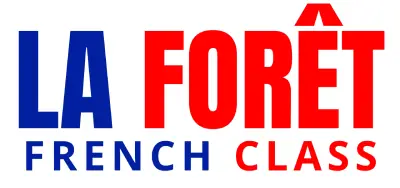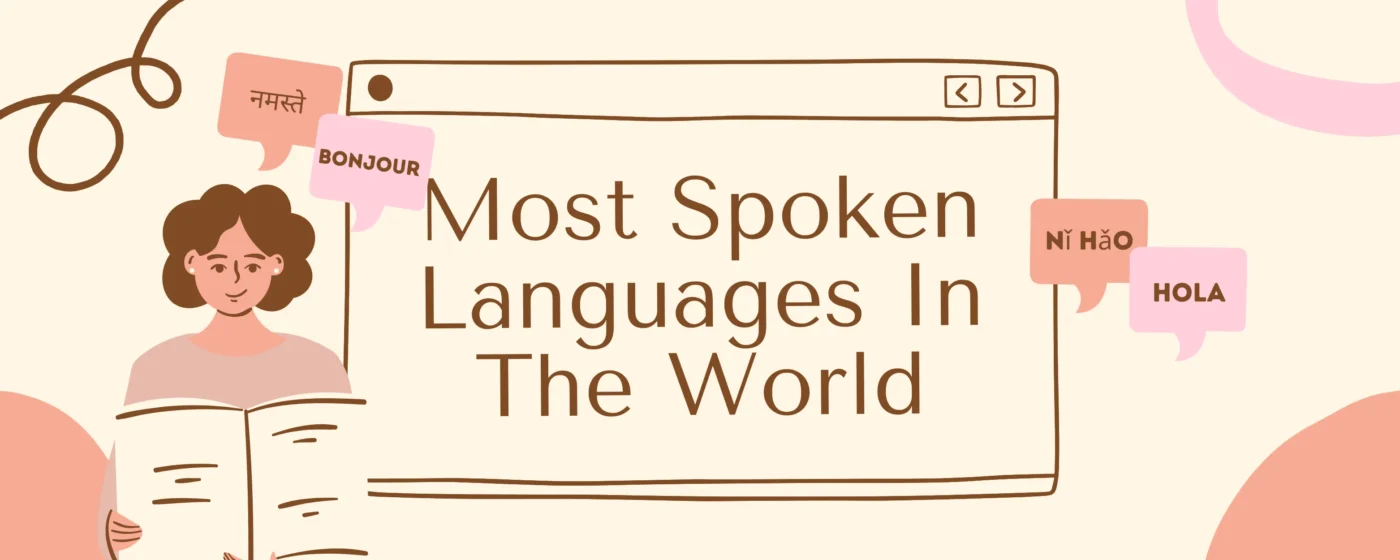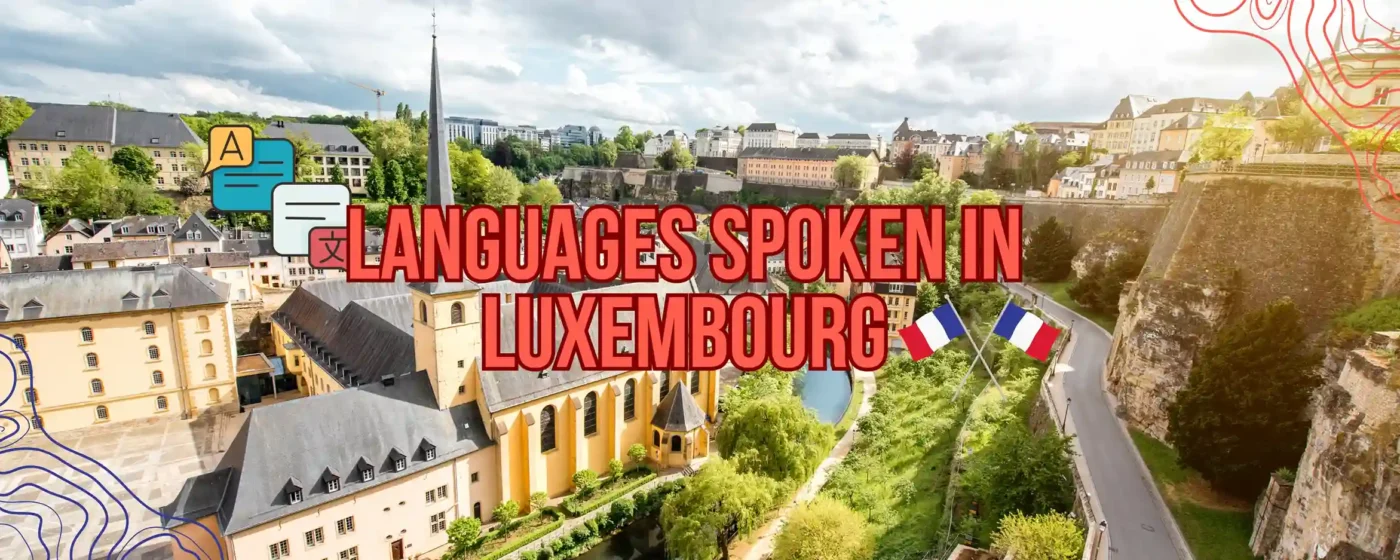Have you ever wondered how language serves as a bridge, connecting billions of people across continents, cultures, and communities? In a world where communication is key, understanding which languages dominate globally isn’t just useful but it’s essential. From business and diplomacy to education and travel, the most spoken languages shape how we interact and share ideas.
With globalization accelerating international ties and migration weaving diverse populations together, the languages we speak and choose to learn, reflect a world in motion, driven by connection and exchange.
How Are Languages Ranked?
Languages are typically ranked based on the total number of speakers, which includes both native speakers (first language speakers) and second language speakers. However, rankings can vary depending on the criteria used. Some lists focus solely on native language statistics, while others consider how widely spoken a language is globally. Beyond numbers, factors like official language status in multiple countries, use in international business, political influence, and cultural reach also contribute. For example, English ranks highly not just for its native base, but because it’s a global lingua franca, used in diplomacy, media, education, and technology across borders.
English
Total Speakers: Over 1.5 billion speakers(including both native and non-native speakers)
Widely Spoken In: United States, United Kingdom, Canada, Australia, India, and across Europe, Africa, and Asia all over the globe
English ranks as the most spoken language in the world when including second language speakers. It serves as an official language or national language in over 70 countries and functions as a global lingua franca in business, science, aviation, education, and international politics. Its influence extends through media, technology, and the internet. With widespread language skills and global presence, English continues to dominate across continents, connecting millions of language speakers worldwide.
Mandarin Chinese
Total Speakers: Over 1.118 billion speakers
Widely Spoken In: China, Taiwan, Singapore
Mandarin Chinese, has the highest number of native speakers globally. As the official language of China, and one of the six official languages of the United Nations, it holds massive global weight. Its significance continues to grow with China’s rise in global business, trade, and politics. While its writing system (using Chinese characters) can be complex, Mandarin’s global presence is expanding through education, tech, and diplomacy, making it one of the top languages for Chinese speakers seeking economic and cultural stability in the contemporary era.
Hindi
Total Speakers: Over 602 million speakers
Widely Spoken In: India, Nepal, Fiji, Sri Lanka, US, UK
Hindi, written in the Devanagri script. It is one of the official languages of India and part of the Indo-European language family. As India’s population and global influence rise, Hindi’s role in politics, business, and the digital world is rapidly expanding. It is also deeply rooted in cultural expression through Bollywood, literature, and music. With millions of native speakers and many second-language speakers in South Asia. Hindi reflects the rich linguistic diversity as well as cultural diversity of the Indian subcontinent, which makes it increasingly significant on the world stage.
Spanish
Total Speakers: Over 560 million speakers
Widely Spoken In: Spain, Mexico, most of Latin America, the United States.
Spanish is one of the most preferred and widely spoken languages globally, with a vast number of native and second-language speakers. As the official language in over 20 countries and a major language of the United Nations, Spanish plays a vital role in international communication. It dominates the whole Latin America with wide range of speakers. It is also the second most spoken language in the United States. With powerful cultural exports like literature, cinema, and music, Spanish continues to rise in global relevance, making it a key language skill for careers in business, diplomacy, travel, and more.
French
Total Speakers: Over 310 million speakers
Widely Spoken In: France, Canada, Belgium, Switzerland, and most parts of Africa
French, a leading Indo-European language, is spoken across multiple continents and holds official language status in over 29 countries collectively known as the Francophone world. It serves as a vital lingua franca in international institutions like the United Nations, NATO, and the European Union. Due to its colonial history, French remains a second language in many African nations, where it is used in government, education, and media. With its cultural depth and diplomatic legacy, French is a top choice for professionals in fashion, cuisine, arts, international relations, and global travel.
Arabic
Total Speakers: Over 310 million speakers
Widely Spoken In: Middle East, North Africa, and Africa
Arabic is one of the oldest and most culturally significant languages in the world. Arabic speakers considers it as the liturgical language of Islam, Classical Arabic spiritually unites Muslims globally. The modern version of Standard Arabic is used in formal writing, education, and media, while there are diverse spoken forms which vary according to region. Arabic holds official language status in over 20 countries and is one of the six official languages of the United Nations. With growing economic relevance especially in global energy, trade, and diplomacy, Arabic is becoming increasingly important for international engagement and cross-cultural understanding.
Bengali
Total Speakers: Over 265 million speakers
Widely Spoken In: Bangladesh, India
Bengali, also known as Bangla. It is the official language of Bangladesh and widely spoken in parts of India. It is one of the top native languages globally and boasts a rich literary heritage, having produced iconic poets like Rabindranath Tagore. This language is deeply rooted in South Asian culture, music, and poetry. Bengali reflects a profound sense of identity and history of Indian subcontinent. A strong diaspora community has helped spread the language’s influence worldwide, keeping its traditions and linguistic beauty alive across borders.
Portuguese
Total Speakers: Over 260 million speakers
Widely Spoken In: Brazil, Portugal, Mozambique, Angola.
Portuguese is the official language of Brazil and several other African nations, making it one of the most widely spoken languages across continents. As a Romance language, it shares vocabulary with Spanish and French, which helps polyglots and language learners. With Brazil’s growing global presence in economy, culture, and sports, Portuguese has increasing importance in trade, education, and international diplomacy. Its rising use in Africa further contributes to its status as a global language of the future.
Russian
Total Speakers: Over 258 million speakers
Widely Spoken In: Russia, Belarus, Ukraine, and Central Asia
Russian is the most spoken native language in Europe and holds official status in many Eastern European and Central Asian countries. It is one of the six official UN languages, granting it high political and diplomatic relevance. Known for its Cyrillic script and grammatical complexity, Russian plays a crucial role in science, literature, and regional cooperation. In post-Soviet states, it functions as a lingua franca, bridging communication across diverse ethnic and linguistic groups.
Urdu
Total Speakers: Over 230 million speakers
Widely Spoken In: Pakistan, India, Middle East, UK, and North America
Urdu is the national language of Pakistan and widely spoken across South Asia. Originating from the Indian subcontinent, it is closely related to Hindi in spoken form but is distinct due to its Perso-Arabic script and refined poetic tradition. Urdu’s literature and ghazals are admired for their depth and elegance. Urdu is strongly tied to films, music, and cultural storytelling, Urdu holds significant emotional and cultural value. It continues to foster cross-border communication and preserve a rich legacy of South Asian expression.
Japanese
Total Speakers: Over 125 million speakers
Widely Spoken In: Japan.
Japanese is the national language of Japan and one of the most spoken languages in Asia. Nearly all native speakers live in Japan, giving it a unique geographic concentration. Known for its three writing systems, kanji, hiragana, and katakana. Japanese is essential to understanding the country’s rich culture, technology, and pop culture. It plays a major role in global business, especially in gaming, robotics, and automotive industries. With growing global interest in anime, literature, and innovation, Japanese continues to attract language learners worldwide.
German
Total Speakers: Over 135 million speakers
Widely Spoken In: Germany, Austria, Switzerland, Belgium, Luxembourg
German is the most widely spoken native language in the European Union and a key official language in multiple countries. As a Germanic Indo-European language, it has significantly influenced English vocabulary. German plays a critical role in scientific research, engineering, aerospace, and manufacturing. It’s also widely used in global academia and business. With Germany’s no tuition fee policy for international students, the language opens educational doors globally. High demand for language skills in finance and industry makes German one of the most valuable languages to learn today.
Punjabi
Total Speakers: Over 125 million speakers
Widely Spoken In: India (especially Punjab), Pakistan, Canada, UK, Australia.
Punjabi is written in Gurmukhi in India and Shahmukhi in Pakistan. As one of South Asia’s most spoken languages, Punjabi holds deep cultural value through music, poetry, and Sikh traditions. It is the native language of Punjab and has spread globally through a strong diaspora, especially in Canada, the UK, and Australia. While mutually intelligible in India and Pakistan, the different scripts reflect rich regional identity. The growing popularity of Punjabi cinema and music industry further elevates its status on the global stage.
Persian (Farsi)
Total Speakers: Over 110 million speakers
Widely Spoken In: Iran, Afghanistan (as Dari), Tajikistan (as Tajik).
Persian, or Farsi, is an ancient Indo-European language with a rich literary and poetic tradition. We can see its script resembles Arabic, it is linguistically distinct. Persian has made lasting contributions to classical literature, philosophy, and poetry. It exists in three major forms: Farsi (Iran), Dari (Afghanistan), and Tajik (Tajikistan), all mutually intelligible with regional variations. As an official language in multiple countries, Persian plays a crucial role in cultural understanding and regional diplomacy. Its historical depth continues to draw scholars and language learners from around the world.
Turkish
Total Speakers: Over 85 million speakers
Widely Spoken In: Turkey, Cyprus, Europe, Central Asia.
Turkish is the official language of Turkey. As a Turkic language, it features an agglutinative grammar structure and has used the Latin script since the 20th century. Turkish holds importance in politics, trade, and regional cultural understanding, particularly as Turkey connects Europe and Asia. With a growing media industry and strong diaspora presence in Germany and other countries, Turkish is attracting global learners interested in its unique structure, rich history, and expanding influence.
Korean
Total Speakers: Over 82 million speakers
Widely Spoken In: South Korea, North Korea.
Korean is the official language of both South and North Korea and uses Hangul, a unique writing system known for being logical and easy to learn. As a linguistic isolate, Korean isn’t directly related to other major languages, yet its global popularity has soared due to the Korean Wave (Hallyu). From K-pop and dramas to skincare, technology, and business, Korean plays a growing role in East Asian diplomacy and cultural exchange. It’s increasingly sought-after by learners worldwide.
Italian
Total Speakers: Over 70 million speakers
Widely Spoken In: Italy, Switzerland, Croatia and Slovenia.
Italian is a Romance language admired for its musical flow, cultural prestige, and strong ties to art, music, fashion, and cuisine. It’s the official language of Italy and parts of Switzerland and deeply connected to Latin and the legacy of the Roman Empire. With a rich literary tradition from Dante to Petrarch, Italian offers language learners access to classical texts and modern creativity. It’s also valuable in careers in design, culinary arts, and cultural tourism, offering language skills that enhance global engagement.
Tamil
Total Speakers: Over 85 million speakers
Widely Spoken In: India (Tamil Nadu), Sri Lanka, Singapore, Malaysia
Tamil is one of the oldest living languages in the world and part of the Dravidian language family. It’s spoken in India, Sri Lanka, and Singapore, and also recognized as a classical language by the Indian government due to its ancient literature and unbroken cultural continuity. With rich contributions to philosophy, poetry, and religious texts, Tamil remains a symbol of identity for its global community. Its strong diaspora presence has helped spread Tamil across the globe, making it a culturally powerful and widely spoken language with deep emotional resonance.
| Languages and Number of Speakers | ||
| Language | Native speakers | Non – native speakers |
| English | 370 million | 1.2 billion |
| Mandarin Chinese | 950 million | 200 million |
| Hindi | 350 million | 250 million |
| Spanish | 500 million | 100 million |
| French | 80 million | 250 million |
| Arabic | 310 million | 270 million |
| Bengali | 230 million | 40 million |
| Portuguese | 250 million | 20 million |
| Russian | 150 million | 120 million |
| Urdu | 70 million | 160 million |
| Japanese | 125 million | 5 million |
| German | 95 million | 30 million |
| Punjabi | 100 million | 15 million |
| Persian | 85 million | 50 million |
| Turkish | 80 million | 15 million |
| Korean | 80 million | 2 million |
| Italian | 65 million | 5 million |
| Tamil | 70 million | 15 million |
Why Learning a Second Language is an Asset?
Mastering a second language significantly boosts career opportunities, improves cognitive abilities, and deepens cultural understanding. In an increasingly interconnected world, multilingual professionals are in high demand across industries like business, diplomacy, and tech. Language learning also enhances memory, problem-solving, and adaptability. Thanks to online platforms, acquiring language skills is now more accessible than ever.
If you’re looking for expert support in your journey, platforms like La Forêt French Class offer structured, flexible courses designed for global learners, whether you’re aiming for fluency or professional language certification.
In today’s interconnected world, learning global languages is a powerful tool for communication, cultural understanding, and career opportunity. Languages transform travel into meaningful connection and enhance careers by opening access to international markets and collaborations and across various other fields. They shape how we think, express, and relate to others, becoming bridges across diverse communities and different people. languages also constantly evolve with society and technology. The real question remains that in the languages of the future, what new ideas and stories will humanity choose to share?
Frequently Asked Questions
1. What are the top 5 languages spoken in the world?
Ans: The top five most spoken languages in the world include English, Mandarin Chinese, Hindi, Spanish, and French. These languages dominate global communication in business, trade, politics, and travel.
2. What is the hardest language to learn?
Ans: Languages such as Mandarin Chinese, Arabic, Korean, and Japanese are often considered the hardest due to their complex grammar, tones, or writing systems. But with time and practice non native speakers can also learn with La Forêt where we provide specialised courses in French to help you ace your language journey.
3. What’s the easiest language to learn?
Ans: For English speakers, Spanish, French, and Italian are often the easiest to learn, thanks to familiar vocabulary, regular grammar rules, and similar alphabets. They contain many cognates from English.



